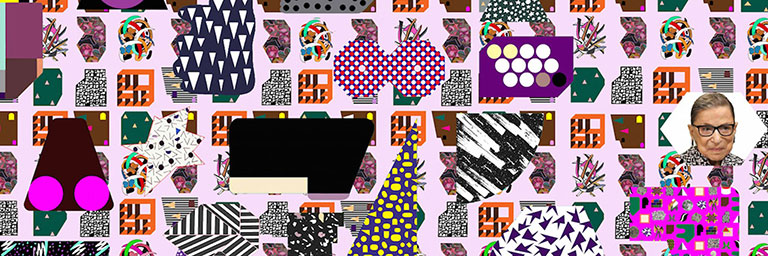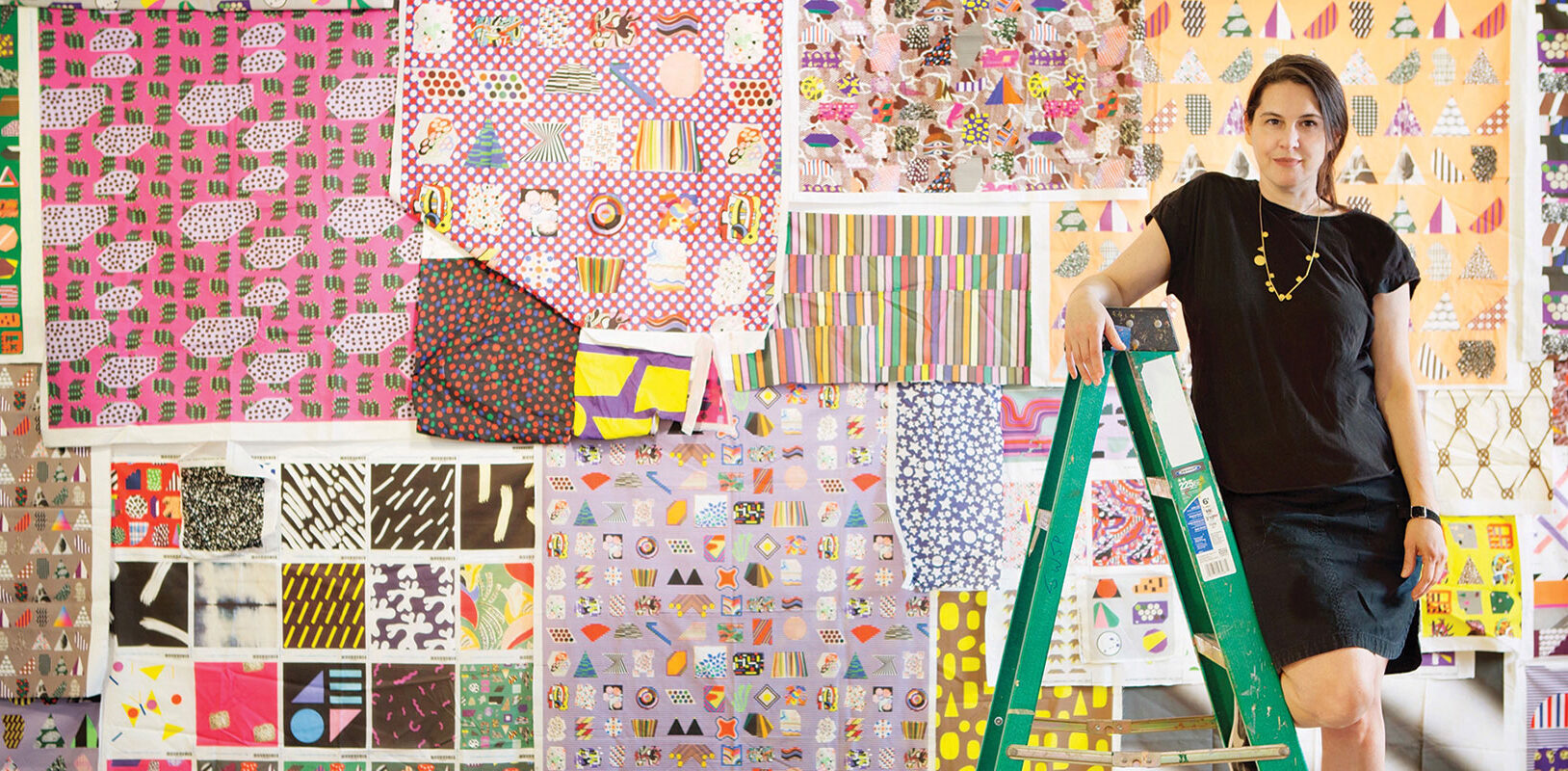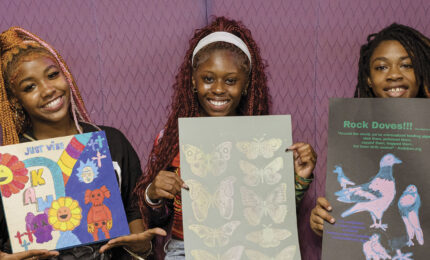A glimpse into the world of Ruth Root’s paintings engulfs you in the play and power of color, pattern, imagery, and shape. Root’s inventive creations, by her own description, “are like a timestamp of culture,” accumulating not only references to art history but today’s social and political landscape.
With her latest work, the acclaimed New York-based artist is boldly expanding the conventions of her medium. The paintings are composed of two parts: flexible forms upholstered with Root’s own digitally patterned fabrics that operate as an alternative stretcher, suspending—like a “macramé plant holder and plant”—irregularly-shaped pieces of Sintra PVC board covered with vibrant designs made of thick layers of enamel and spray paint. She connects the two with visible folds in the fabric and hangs them using exposed grommets and screws, intentionally revealing the mechanics of her work to be both functional and aesthetic. The completed paintings, explains Root, operate as three-dimensional sculptures that have been flattened into two-dimensional shapes, as if from a Road Runner cartoon.
Root, who will be debuting her newest series at Carnegie Museum of Art on April 19, trained at the Art Institute of Chicago and was initially drawn to works from the celebrated 1950s artistic movement of abstract expressionism—think Jackson Pollock and Mark Rothko. “They’re my form of understanding art,” she says. However, having studied during the 1990s, a decade shaped by the rise of early feminism, Root wanted to make paintings that commented on how such art had almost exclusively been accessible to men, while simultaneously noting the importance of it to her practice. “There needs to be a way of making sense of being a painter and acknowledging all that has come before you,” she explains, “and trying to make something that adds to that dialogue but is also something you experience visually, not through language.”
“I think making connections between everyday things, and art things, and things happening in the world is essential for paintings and for looking at paintings.” -Ruth Root
While Root learned to borrow the scale, emotive tone, and dedicated studio practice of these mid-century figures, she infused her paintings with a fresh take using tools such as her Feminist Color Wheel, which favored hues of lavender, turquoise, pink, and pastels often not taken seriously in the field.
The artist’s works continue to burst with a wonderland of color. Embracing today’s saturated culture as material for her patterned textiles, Root sources slews of images from art history, news media, and the quirky findings of everyday life. Suddenly, Ruth Bader Ginsburg, a slice of pizza, and a Frank Stella-esque design are all at play in the same pattern.

Ruth Root, digital fabric design for Untitled, 2017. Image courtesy of the artist and Andrew Kreps Gallery, New York.
“I have a painting for the Carnegie show that has Dr. Christine Blasey Ford and Anita Hill both holding their hand up and swearing to tell the truth [as] part of a pattern,” says Root. “When I started working on this show, I was watching the Brett Kavanaugh hearings and was just devastated to see these women speaking, and then the next minute, I was in the studio painting. So, I feel like those images of the painful telling of their truth goes into part of the painting.”
While a jumble of images reflects the artist’s presence of mind at the time of a work’s making, Root is fascinated by how viewers derive their own context and meaning from her chosen visuals. To encourage close looking, she created an activity map for Carnegie Museum of Art visitors featuring curious quests throughout the museum. Root prompts viewers to look at painting from a painter’s point of view.
“I think making connections between everyday things, and art things, and things happening in the world is essential for paintings and for looking at paintings,” she says.
Root’s guide encourages museumgoers to consider the conversation between them and the art, the time and their place in it. “For the viewer to bring all of their experiences to [the art] is so great,” Root says. “You can start to see many things in one painting. You can see all human activity in a painting.”
Hannah Turpin is curatorial assistant for modern and contemporary art and photography at Carnegie Museum of Art. Ruth Root will be in conversation with curator Eric Crosby at 7 p.m. on April 18.







